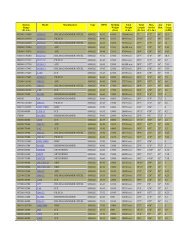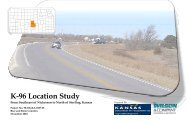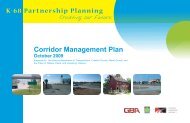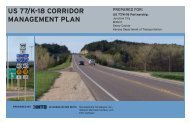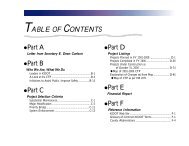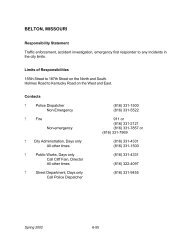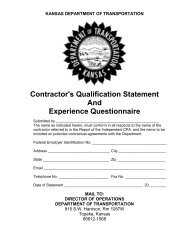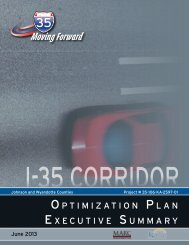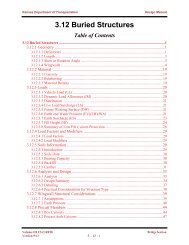KANSAS MOTOR VEHICLE ACCIDENT REPORT CODING MANUAL
KANSAS MOTOR VEHICLE ACCIDENT REPORT CODING MANUAL
KANSAS MOTOR VEHICLE ACCIDENT REPORT CODING MANUAL
Create successful ePaper yourself
Turn your PDF publications into a flip-book with our unique Google optimized e-Paper software.
therefore, the best two pictures of a damaged vehicle are those that show opposite corners, each<br />
photo showing one side and one end. Circumstances may be such that it is impossible to get such<br />
pictures, but try to approximate such views as well as possible.<br />
Oblique or corner photographs like those recommended for the best one or two photographs<br />
usually leave much to be desired for technical reconstruction purposes. For example, from an<br />
oblique picture it may be difficult to judge how far a vehicle part, such as a wheel or headlamp, was<br />
pushed straight back and how much to the right or left. This is important; four damage pictures of<br />
a vehicle are usually needed for technical purposes. Each shows the entire vehicle from one side<br />
or end. Make these pictures on the centerline of the vehicle facing directly toward it. Damage to<br />
the vehicle often makes it difficult to decide just where the centerline is. Align your camera by<br />
undamaged parts of the vehicle. For example, if the front end has been forced to the right, do not<br />
take the picture looking directly toward the offset front end, but rather on a line that passes down<br />
the left side.<br />
The center of the windshield and the rear window if in their normal position. For side views, make<br />
the center doorposts on each side coincide so that the one on the rear side covers that on the far<br />
side.<br />
View obstructions should be photographed under two conditions: (1) the driver claims or suggests<br />
that his view was obstructed by something on the road; and/or (2) you believe that this may have<br />
been the case. Much time can be avoided in court, if photographs are produced which allow<br />
others to judge for themselves the nature of the view obstruction.<br />
If there are vertical view obstructions such as crests or hills, have a person or a car stationed at<br />
known and recorded distances beyond the crest to show how much or how little they could have<br />
seen. If there are horizontal view obstructions on curves, a sequence of pictures with a wide-angle<br />
lens will show them adequately. For view obstructions at junctions or railroads crossings, an<br />
extremely wide-angle lens would be necessary to show as much to the side as the human eye can<br />
perceive. Such a lens usually gives distorted perspective, so if there is a view obstruction<br />
probable, make approach pictures at 50-ft. intervals, but in addition, one straight ahead down the<br />
road at each location. Also, make one at a 45-degree angle to the side in the direction at which<br />
the hazard was located.<br />
Try to make view obstruction pictures under as nearly as possible the same conditions as existed<br />
at the time of the traffic crash. For example, if trees and shrubs were bare of leaves at the time of<br />
the traffic crash, try to make the picture when they are that way; and if cars were parked at a<br />
junction when the traffic crash occurred, make the picture with cars parked in as nearly the same<br />
way as possible.<br />
Photography documentation provided by the Kansas Law Enforcement Training Center.<br />
89



